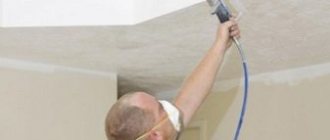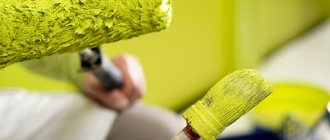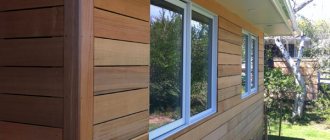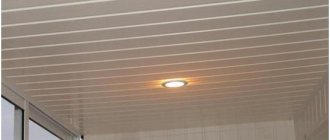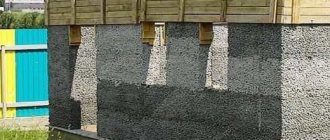Not every painting process takes place in convenient conditions with access to an electrical outlet. In situations where it is not possible to use a power tool, a completely autonomous manual mechanical spray gun, capable of providing effective spraying of water-based mixtures, comes to the rescue. Next, we will tell you how this amazing device functions and what work it is used for. We'll show you how to choose a reliable device and extend its service life with proper operation. And for the most pragmatic, we’ll show you how to make a hand-held spray gun with your own hands from household items. So, let's begin.
Manufacturers
Hand sprayers for whitewash have been used for quite some time.
Among the most popular models, it is worth highlighting the devices SO-20V, KRDP-5 (4). Almost all products have similar characteristics, and the main difference is the weight of the device and its cost. For a review of the SO-20V manual spray gun, see the following video.
Manufacturers of hand-held spray guns are the following domestic and foreign ones: Profmash, Auarita, Bosch, Einhell, Forte, Intertool, Miol.
Sprayers allow you to work with lime and chalk mortar in rooms where the ceiling height can reach 3.5 meters, without using additional equipment, such as scaffolding or stepladders.
The design of the sprayers is quite simple, so malfunctions are rather the exception to the rule.
The spray gun nozzle must be made of carbide raw materials, and the elements that will come into contact with aqueous solutions during operation must have a special protective coating that prevents the formation of corrosion.
Domestic products are produced taking into account all of the above nuances, and the tools also have the ability to adjust the extension for supplying paint based on the height of the working surface, which makes processing easier.
This is interesting: The subtleties of finishing a ceiling made of plastic panels
What determines the quality of the coating?
Of course, the quality of the coating is affected by the device used to produce it. Depending on the chosen spray gun, the dyeing technology changes, and accordingly, the result is always different.
When painting with a high-pressure tool, materials are applied to enamel and varnished surfaces. The result is uniform, high quality, and a minimum amount of compressed air is consumed during operation. By spraying paint from a distance of at least 40 cm, the artist will get the best result.
When using a low pressure spray gun, air consumption increases and then there is a need to use a compressor. Work is carried out at a distance of 20 cm and requires a wide hose. This method of application reduces paint consumption and, accordingly, it is more profitable.
Universal spray guns combine the two previous methods. The device can be used both at home and on an industrial scale.
Pneumatically driven spray gun for car painting
How to care for your device?
In order for the device to serve for a long time without breakdowns and the need for repairs, certain rules must be followed. Before use, you must carefully read the instructions, the information from which should be followed during operation. A mechanical spray gun may not be dangerous to humans, but if used incorrectly, it will quickly break down.
Before each use of the device, a visual inspection must be carried out. After finishing work, the device must be thoroughly rinsed and dried. This ensures that the device will last a long time. There are no parts that can quickly fail in a manual device. But the simple mechanisms that are there must be carefully looked after.
Do not overload the device. You need to pour exactly as much paint into it as indicated in the instructions. Moreover, if you plan to use an acrylic mixture, then a lubricating additive is additionally added to it.
It is also worth considering that when working with a mechanical device, a cloud with tiny particles of paint is often created
They will definitely get on everything around, so you need to take precautions. First of all, the master needs to protect his body, and especially his eyes and mucous membranes.
But do not forget that small particles of paint will remain on all objects surrounding it. Therefore, all elements that should not be painted must be removed or covered with something.
A hand-held spray gun (spray gun) is a convenient and economical device for quickly and efficiently painting walls and ceilings with water-based paint or a water-lime composition. Even the simplest devices, including those that can be made from scrap materials with your own hands, make it possible to obtain good results. But before you paint the walls, it’s worth practicing a little on unnecessary surfaces to get the hang of it and further increase the efficiency of using the device.
Instagram Templates FREE
Want to get a FREE set of templates for a beautiful Instagram?
Write to my chat assistant on Telegram below
You will receive: Free templates “Bezh”, “Akvarel”, “Gold”
Telegram Viber Vkontakte
or write “I want free templates” in direct message on Instagram @shablonoved.ru
Want to get a FREE set of templates for a beautiful Instagram?
Write to my chat assistant on Telegram below
You will receive: Free templates “Bezh”, “Akvarel”, “Gold”
Telegram Viber Vkontakte
or write “I want free templates” in direct message on Instagram @shablonoved.ru
Features of choosing a spray gun
To purchase a high-quality manual paint sprayer, when choosing, you should pay attention to the following points:
- The device should be lightweight with a conveniently located center of gravity. Otherwise, it will be uncomfortable to work.
- The device must have a multi-sized spray nozzle, with different nozzle diameters;
- The main metal parts of the product must have anti-corrosion properties and high wear resistance.
There is a misconception that you can achieve perfect coating quality with any spray gun. In reality, the quality of the coating depends on the nozzles, their diameter, needles, the quality of the metal from which the product is made, etc. Thus, every detail in a spray gun is important.
Therefore, when choosing a product, it is better to give preference to tools from trusted manufacturers, especially if you plan to work with expensive material. Of course, the price of a high-quality device will be higher, however, it is justified by the durability of the product and the quality of its work.
Spray gun rod
Peculiarities
When the question arises about finishing work regarding the ceiling in a room, there is a need for a convenient and effective tool that will help solve this problem.
When planning to whitewash a ceiling or walls, you can use a roller or brush, but treating the surface in this way will take a lot of time, and the process itself will be fraught with discomfort and various difficulties.
In order to optimize and facilitate such work, special devices for painting surfaces are available on the modern market. They are called spray guns, some call this product a spray gun, a spray gun, and so on. The spray gun is available in manual, pneumatic and electric types.
The main feature of working with painting guns is the level of safety that they provide to the master, because everyone knows that lime mortar is quite caustic, and therefore can cause burns upon contact with human skin. When using a brush, such cases arise very often, and using a spray gun eliminates the presence of such unpleasant situations during finishing work.
Using a mechanical spray gun for whitewashing does not require a stepladder, since the special fishing rods included in the device will make it possible to paint ceilings and corners between the ceiling and walls while being on the floor.
Hand tools will save time on painting as they are powerful enough to cover a large work area, working on a principle that allows you to paint substrates with minimal mess and splashes.
The standard type of mechanical device for whitewashing is a small-volume container into which a coloring composition, lime, chalk solution or any other liquid substance is pumped.
The main component of the tool is attached to the reservoir - a handle with a button that controls the progress of spraying the composition, the angle of application and intensity. In addition, the spray gun is equipped with a nozzle from which the solution exits onto the base.
Today on sale you can find a large number of modifications of mechanical tools used for whitewashing; they differ in their design characteristics and cost.
For industrial purposes, hand sprayers are rarely used; their main area of application is operation in private houses and apartments.
Another model of hand-held spray guns is considered to be a piston tool; it is notable for its size and a slightly different principle of performing the work.
In such a device, air injection is performed in the same way as a conventional pump when inflating. The cylinder contains several hoses, one of them is connected to a container containing a composition for treating bases.
The second hose has a sprayer at the end; it is an elongated metal tube with a button and a nozzle.
The advantages of manual sprayers include the following qualities of the tool:
- simple configuration - the spray gun is very easy to disassemble, which allows, if necessary, to replace any part that has become unusable;
- ease of use - any master can regulate the flow of the composition, even a person with minimal experience;
- hand sprayers are universal devices that are suitable not only for working with lime and chalk, but also any other type of dye for substrates - the tool is recommended for use with any finely dispersed coloring compositions;
- the products have a low cost; the pneumatic spray gun is considered the most expensive device;
- the applied composition lays down in an even layer;
- there is no need to use additional devices in order to process hard-to-reach parts of the base.
DIY manual paint sprayer
Many people would like to have an autonomous device for effective liquid spraying, but the cost of such a device may not seem commensurate to its performance and ease of use. You can get a working manual paint sprayer for almost nothing, you can only make it yourself from inexpensive components.
The manual below demonstrates the process of assembling a spray gun, primarily intended for spraying liquid solutions. The diameter of the nozzle used in the assembly is not suitable for spraying water-based paints. However, a homemade system can always be upgraded by installing a brass nozzle from a small pump-action spray gun or a real hand-held spray gun. So, for assembly we will need the following components:
- Regular hand bottle sprayer (required as nozzle)
- Hose 8-10 meters, small diameter
- Sealed container (canister, bottle)
- Bicycle tube nipple with nut
- Ski pole, stem or straight branch as an extension
- Pump (preferably with a pressure gauge)
- Electrical tape and a tube of super glue
By instruments:
- Screwdriver with drills of different diameters
- Pliers
The assembly process is very simple and can be repeated by almost anyone, even without experience with tools. It is not necessary to follow the sequential steps, but we will present the instructions in the order of the author's narrative.
1.
We take a hand sprayer and glue its tube to the attachment point for a more reliable connection.
2.
We fix the trigger in the pressed position.
3.
We connect the end of the hose with the spray tube, inserting the second into the first. For a tighter fit, several layers of electrical tape should be wrapped around the tube.
4.
We wind the resulting structure to the extension cord.
5.
We make inlet and outlet holes for the container plug. If you use a regular bicycle tube nipple, use an 8 mm drill. We calculate the diameter of the hole for the hose ourselves. If the outer diameter of the hose is 9 mm, use an 8 mm drill for a tighter fit.
6.
Insert the nipple into the hole from the inside, securing it with a nut from the outside.
We thread the hose into its hole and pass it a short length, sufficient for its end to rest against the bottom of the container. 7.
For ease of carrying, a pump can be attached to the container. Or it can be connected as needed if the amount of work is small.
To get a clearer understanding of the assembly of a handheld spray gun, we strongly recommend that you watch the following video.
article from the Rating section
- 60
Hand tools Painting tools Garden tools
Save this page on your social media. network and return to it at any time.
ADD A COMMENT
Precautions and preparation
When using a spray gun to paint ceilings, be sure to take care of safety. When sprayed, tiny particles of paint will end up in the air, after which they will settle not only on the floor and other surfaces, but also get into your eyes and lungs. Despite the fact that ceiling paints contain practically no harmful substances, inhalation is still dangerous, the same applies to the eyes
It is clear that working in a respirator is not so convenient, however, this cannot be neglected. If you don’t have a respirator, a regular cloth or gauze bandage will do. Also, stock up on glasses, so the paint will not get into your eyes. Before painting, the room must be cleared of furniture, and anything that cannot be removed must be covered with film. If you are only repainting the ceiling, cover the walls with polyethylene, securing it with masking tape.
Now you need to prepare the paint. As a rule, the packaging always contains the manufacturer’s instructions, which indicate the exact proportions. But it happens that there are no such instructions, then you will have to thin the paint intuitively. The optimal thickness is determined by each artist separately, but the paint should not be very thick, nor too thin. It is best to spray a little diluted paint on some surface, but not on the ceiling! This way you will see how well the paint sprays and adheres, whether it needs more thinning, or is it already enough.
After diluting the paint, be sure to filter it, because the slightest particles of debris, dry paint or clumps can clog the sprayer and leave unsightly marks on the ceiling. This point is very important: without filtration, painting the ceiling with a spray gun can take a long time and cause a lot of problems.
Operating rules
In order for the paint application process to be successful, the following rules must be observed:
- Clear the room of mobile furniture and cover the rest with polyethylene film.
- Buy suitable paint. It can protect against moisture or fire, and prevent corrosion.
It is necessary to dilute the mixture strictly according to the instructions in the instructions and wear personal protective equipment.
Preparation
To achieve excellent results, it is imperative to prepare the work surface. Dust and other debris should be cleaned and dirt should be removed using detergents or shampoo. The surface must be degreased before starting work. In some cases, you will need to remove the old coating layer and sand problem areas. A primer is applied to the surface, and then the paint coating itself.
How to thin spray paint
The surface painting kit consists of standard elements: pigment, solvent and binder. The solvent, in turn, can be polar or non-polar.
Solvent for paint "Bulmat"
To prepare the coloring agent, 50–60% solvent is added to the composition and mixed thoroughly. This is a base that fits any type of instrument. In addition, the packaging clearly states the instructions and indicates the proportions that should be maintained. Failure to comply with the proportions may result in an unsuitable paint consistency or the surface will be covered with small cracks.
How to dilute spray paint
The paint is thinned using a solvent. The most common numbers are 646, 647, 650, p-4 and white spirit. Each of them has its own characteristics and is suitable for a certain type of paint. White spirit is a non-polar solvent intended for alkyd and oil enamel.
Which paint to choose
The paint and varnish market offers a wide range of spray paints. It is possible to purchase alkyd, oil, acrylic, nitro-enamel and water-based paint. For each type of surface, the coating required for it is selected. The selection criteria are strength, stability, attractiveness and durability.
Nitro-enamel and alkyd paints are used for the car; for wood – acrylic and oil; for walls - water-based, acrylic and alkyd.
Acrylic enamel 2:1 AK-2K-400
Applying paint
You should start working by setting the necessary parameters. The spray gun needs to be adjusted depending on the size of the surface. For high-quality application, a distance of 18 cm is used. But do not forget that the distance is individual for each tool. The coating is applied quickly and starts in small areas. Coloring occurs from top to bottom. To achieve an excellent result, it is recommended to apply three layers.
Pneumatic device
Lime whitening of ceilings can be done using pneumatic models. Professional builders prefer such devices.
A pneumatic spray gun is mainly used for painting large areas. It differs from the manual model in the mechanism responsible for maintaining the required pressure in the tank.
For this purpose, there is a compressor that provides constant pressure. This allows the stream to come out without interruption. And the result is an immaculately painted surface.
There is no need for such spray bottles if they are to be used rarely. Since they are more expensive than manual models and rare use does not justify such a purchase. The main advantage is their high performance.
The device works thanks to the air pressure created by the compressor. A lime or other coloring solution is supplied through the spray nozzle under high pressure.
And since this pressure is continuously present, the finely dispersed composition is applied to the surface easily and evenly with a sprayer.
If you follow all the rules for using this type of device, then in a short time you can see an ideal surface that does not have:
- excess solution;
- leaks;
- divorces.
Types of spray guns
Due to the popularity of spray guns, there is a wide range of products available in the market. What type of device should I choose? Buyers have the option of purchasing a pneumatic, manual and electric sprayer.
Pneumatic spray gun Air Pro AM5008 LVLP
The first type requires the use of a compressor. Such models are in demand as they guarantee high quality coverage and are easy to use. The disadvantage of pneumatic spray guns is the large size and price of the product.
A manual paint sprayer is economical, affordable and effective. Among the disadvantages of use, one can highlight the need for the master to pump up the pressure himself.
The electric device is considered the most popular and convenient. This design can easily be made with your own hands. It consists of a turbine that supplies air and a container with coloring material.
Hand spray guns
They are used for spraying whitewash and water-based paint on a small finishing area. The productivity of a hand-held spray gun is low - up to 250 m2 per hour. The working pressure is also low - up to 0.6 MPa, so the devices are not designed to work with viscous compounds - varnishes, putty. Hand spray guns can be used to apply liquid antiseptic or fire retardant, as well as to treat garden crops against pests.
A hand-held spray gun is shown in the illustration. The paint in it is supplied using a plunger pump located in a cylindrical body. The pump is controlled using a handle: the painter's assistant moves it up and down.
Manual spray gun KROS-1M
At the bottom of the body there is a reservoir for the coloring mixture; two hoses are connected to it - suction and pressure. When the pump rod moves upward, a vacuum is created inside the tank, due to which paint is drawn from the outer tank through the suction hose. To prevent clogging of the spray gun with solid particles, the end of the hose is equipped with a filter. To prevent backflow of paint, a suction valve is provided in the tank.
When the rod moves downwards, excess pressure is created inside the pump, and paint from the reservoir is supplied through the pressure hose to the fishing rod. At the end of the rod there is a nozzle with which you can adjust the spray angle. At its other end there is a shut-off valve - trigger. The fishing rod consists of two parts, allowing you to change its length, which is convenient when painting the ceiling.
Scheme of working with a manual spray gun
Advantages of hand-held spray guns:
- low price;
- simple design, reliability;
- no need to connect to the electrical network or compressor;
- the presence of a long fishing rod that allows you to paint the ceiling without a stepladder.
The disadvantages include the fact that the device:
- has low productivity;
- we require at least one assistant;
- Not suitable for all types of paints and varnishes.
Technical characteristics of manual spray gun SO-20V
Where is it used?
A mobile device for effectively spraying liquid, capable of working anywhere using muscle power alone, can be very useful in many life situations. Perhaps a hand-held bullet gun is noticeably behind a specialized tool in terms of performance, but in certain circumstances there is nothing better than it. The scope of application is limited to spraying water-based solutions only and the imagination of the owner.
The primary purpose for the creation of a mechanical sprayer was painting. Since the tool has a fairly weak pressure (up to 5 atm), the quality of the applied layer is noticeably lower than that of pneumatic or electric analogues, but this is quite enough for upgrading utility and industrial premises. When using a manual spray gun for paint, you should remember that the device only works with water-dispersed mixtures (chalk, lime, emulsion).
In addition to painting, the device is successfully used in the treatment of various materials with fire protection agents.
You can also apply detergents and some types of glue with a hand spray gun. The second most popular area of application for the device can be considered private agriculture, where constant treatment of plants with various fertilizers and chemicals is required. In this case, we are talking not only about tall shrubs and trees, but also ordinary beds or potato fields. The convenient extension cord allows you to easily cover large areas without leaving your spot. A manual spray gun cannot be called a panacea for garden work, since there are more budget-friendly pump-action spray guns
.
As a not entirely obvious job, a hand-held spray gun can be used to wash a car, as a mobile, low-pressure analogue of a mini-wash (Kärcher). With this sprayer you can easily apply a soap solution and just as easily wash it off. Very useful when traveling outdoors.
Spray painting
It is better to start whitewashing from the ceiling, namely from its corner. Despite the fact that the whitewash tool provides a fairly uniform layer the first time. Still, it is recommended to perform staining in two passes. The first layer should be denser. After applying it, let it dry thoroughly. After which we proceed to apply the second, but less dense. The advantages of this coloring method are:
- hiding all imperfections, both of the ceiling surface itself and of layers of paint;
- longer service life.
If, despite all the efforts, the whitewashing is completed with some errors, then do not be upset. After all, when whitewashing by hand, you get a lot more flaws and a lot more labor costs. All comes with experience. It is worth practicing several times and the result will not be long in coming.
If you follow the above recommendations when working with a spray gun, then even a beginner can get a high-quality result.
Choosing a paint sprayer
To make the right choice, you should rely on the basic parameters and requirements for the device. For quick, convenient and light-duty work, it is best to purchase an electric sprayer. If you need to coat a large area, it is more advisable to use a pneumatic spray gun. When price is a priority, you should pay attention to hand tools.
Pneumatic spray gun Air Pro AM2012 HVLP WB
Manual sprayer
A hand-held paint sprayer is usually made of aluminum, which makes it resistant to various factors, including components of paint and varnish substances. The design consists of a container for the material and a narrowed nozzle. The paint container can be plastic or metal. Very often the tool is equipped with several attachments. This allows you to choose the most suitable option. The spray gun has two screws that are responsible for regulating the supply of air and coloring agent. Typically, the device holds up to 1 liter of liquid.
The principle of operation of the sprayer is very simple: when you press the trigger, air is supplied, creating excess pressure, and the paint is pushed into the system. After this, spraying occurs.
Electric spray gun
The electric type device is the most popular, as it does not require any effort and does not need additional elements. Pressure is created automatically using a special mechanism, which, in turn, starts after power is supplied. The spray gun is equipped with a large nozzle, which ensures easy application of viscous paints and water-based emulsions. Almost all models have one nozzle, which is quite inconvenient when applying coating to different types of surfaces.
Bosch PFS 55 spray gun
Pneumatically driven spray guns
Sprayers of this type are professional, and are available in different types: low-pressure, high-pressure and universal spray guns. One of the advantages is the presence of many different attachments (nozzles), which allows you to perform work of any complexity. Device capacities vary from 100 ml or more.
A pneumatic spray gun is perfect for painting large surfaces; it will provide high quality spraying and break up the paint as much as possible so that the coating occurs in the thinnest layer. In this regard, the master coats the surface several times to create multiple layers.
Prevention and maintenance of a hand-held spray gun
The main rule for sprayer maintenance is timely cleaning of paint.
IMPORTANT! Immediately after use, the pump, hoses, and most importantly, the nozzles, must be thoroughly rinsed. Do not fill it with water until tomorrow, but rinse it
After that, be sure to run the working cycle with clean water, checking the quality of the spray on the nozzles. If this is not done, the thin holes will become clogged with particles of dried paint, which will become cemented and will be difficult to remove later.
Do not fill it with water until tomorrow, but rinse it. After that, be sure to run the working cycle with clean water, checking the quality of the spray on the nozzles. If this is not done, the thin holes will become clogged with particles of dried paint, which will cement and be difficult to remove later.
Then the entire system is purged with air, dried and assembled into transport position according to the instructions. The suction and pressure hose should be stored in rings. It is not recommended to hang hoses on a hard hook or nail; a crack may occur at the bend.
Before the next use, it is necessary to carry out an inspection (for visual detection of damage) and check the tightness of the seals and valves. If faults are identified, spare parts are replaced with new ones.
IMPORTANT! The spray gun must be checked long before work begins, so that an unexpected breakdown does not change your repair plans.
How to choose a spray gun?
In any hardware store you can find a wide range of similar products. Spray guns differ primarily in the type of work. Mechanical devices will cost much less than electric or pneumatic ones. Therefore, they are in great demand, although they are considered not very convenient.
Before purchasing a device, you first need to determine for yourself in what area it will be used. If we are talking about home repairs in a small apartment, you can safely purchase a manual device. It will be both more profitable and more convenient.
Mechanical sprayers may also differ slightly. First of all, this concerns the volume of the paint tank. If it is too large, it will be awkward to hold, and if it is too small, you will have to constantly add paint. Therefore, you should opt for the middle option.
Paint containers can be made from several types of material. Most often, manufacturers offer plastic and metal tanks. Both types last a long time, but plastic is lighter and cheaper, which is why such spray guns are more popular. The paint container can be located below or above the lever. This does not play a big role, and this factor does not affect the quality and ease of use at all.
A much more important characteristic is the size of the nozzle. The best option is 1.5 cm
This will allow the spray gun to work with most types of paint. If you take a smaller size, then there will be no more options other than using a spray gun for water-based paint.
Normal spray guns with average performance produce about 8 bar of operating pressure. This will be enough to work on medium surfaces and apply paint in a fairly neat and thick layer. A pressure of more than 10 bar will produce a large torch that can quickly paint large volumes, but in this case the paint is applied in a very thin layer.
If you plan to use the spray gun to work with putty, it is worth purchasing an automatic version with a wide nozzle and high operating pressure. Most often, pneumatic devices are used for these purposes.
When buying a spray gun, you need to carefully examine it, hold it to your hand to make sure that it is really convenient to use, and be sure to pay attention to the package. It is advisable that the device does not weigh too much
Otherwise, your hands will immediately get tired while working. Many devices come with additional attachments. They can be used for different types of paint, making the device more versatile. However, too many unnecessary extras will be a waste of money. Such devices will cost more than regular ones, so there is no point in overpaying for unnecessary parts.
What kind of spray gun can it be?
Spray guns for whitewashing and painting are very popular. Even the simplest manual model can make the life of a person doing repairs much easier. A regular mechanical paint sprayer is perfect for household use and is inexpensive. The price of models in construction stores starts from 1000 rubles. If you spend half an hour of free time, you can make a simple hand-held spray gun with your own hands. Its power will be quite enough to quickly apply water-based paint on walls or a water-lime mixture on the ceiling.
If you have to use a spray gun over a large area, then you should take a closer look at the electric option. In addition, pneumatic spray guns are available for sale, but they are already considered devices for professionals. For special situations, manufacturers offer mixed-type spray guns.
Mechanical options are the simplest and cheapest. This is their main advantage. But it will be quite difficult to process large volumes of surfaces using such a device. Therefore, for large-scale work, craftsmen still try to purchase electric spray guns. They are much more expensive, but in this case it is fully automatic. You just need to make the necessary settings, and then point the sprayer at the wall and press the button.
If you compare manual and electric spray guns, you can find many pros and cons in each case. Mechanical devices are inexpensive and quite simple to use. However, achieving good accuracy when painting will be almost impossible. Moreover, due to the need to constantly press the lever, it will be physically difficult to process large volumes. Automatic devices are completely free of all these disadvantages. With their help, paint is applied easily and quickly. Moreover, it will be much easier for the master to monitor the quality of painting the surface, so you can achieve excellent results and even paint application.
In addition, spray guns can be divided into categories according to pressure level. Both mechanical and automatic devices can operate at low and high pressure. In the first case, a small torch comes out. Such spray guns are convenient to use when it is necessary to apply a thick layer of paint. There are also options that produce high blood pressure. Powerful devices can be used to apply not only all types of paints, but also materials with a dense structure. Some craftsmen even use them for putty.
High pressure allows you to apply paint very quickly and cover large surfaces in a matter of minutes. However, you should not expect high-precision and high-quality painting from the use of such a device.
Tips and tricks
Before purchasing a hand-held spray gun, you must clearly define the purposes for which the tool will be used. Having decided on this issue, it will be much easier to make the right choice, since the range of modern tools is quite large.
Mechanical sprayers are the most budget-friendly option for devices, pneumatic tools are highly expensive, and electrical devices belong to the mid-price category.
The device is selected based on the following product characteristics:
- volume of the solution tank;
- power;
- pressure.
Each parameter directly depends on the other - that is, a large tank will have higher productivity. The optimal pressure is considered to be 5 bar. Products most often have a tank volume designed for two liters of composition.
The new solution should be first tested on any surface before starting to treat the bases in the apartment, so you can once again make sure of the appropriate consistency of the composition. The liquid must be filtered before use. This will save time, since the sprayer will become much less clogged.
The efficiency and uniformity of the treatment will depend on maintaining the same speed of whitewash spraying. At the end of the work, the remaining liquid can be usefully used as a treatment for trees in the yard.
Preparation for using a whitewash sprayer yourself includes the following points:
- the size of the nozzle hole will determine the efficiency and correct application of the composition, so it is worth adjusting it, bringing it to the smallest size;
- to strain the solution, you should use a sieve, the cells of which will be no more than 5 mm; in addition, gauze is perfect for such tasks;
- In order to extend the service life of a hand-held whitewashing tool, regular maintenance of the device should be carried out.
In addition, after each use, the tool must be thoroughly cleaned and a detailed inspection carried out for possible defects. For these purposes, a visual inspection of all structural elements is carried out, after which the gaskets are checked, as well as the functioning of the device.
The spray gun is
As a mechanism, the spray gun consists of the following main parts:
- spray head with nozzle, nozzles and needles (parts responsible for the formation and exit of the flow) ;
- body with handle (most often made of light metal) ;
- tank (if necessary) ;
- connection and communication nodes;
- switching and setting organs;
- measuring instruments (may be missing).
The design of a spray gun
There are many types of spray guns, each of which has small or fundamental differences:
- for whitewashing;
- for varnish;
- spray gun for a vacuum cleaner;
- for liquid rubber;
- electronic (electric with electronic control unit).
Which electric spray gun to choose depends on the amount of work and materials.
For furniture, wood and wooden surfaces, almost any will do. For facade work, mobility will be required. Car repairs require increased access to certain areas.
Even the power supply of the mechanism, from the battery or the network, plays a role in the selection. Only he himself can quickly and accurately determine which spray gun the master needs.
How to use the tool
The whole process can be divided into two stages: preparation of the solution and equipment and the actual application of lime to the walls or ceiling.
Preparation
Preparatory work includes the following:
- Checking the serviceability of the tool. Even if the master keeps his spray bottle in order, it is worth additionally checking the functionality of all components by filling the device with a small amount of water. After checking the serviceability, it is recommended to adjust the size of the injectors, making them minimal. This is necessary for economical and uniform application of the dye.
- Straining the solution. If this is not done, the nozzle holes on the sprayer will quickly become clogged, and the operation of the tool will become poor. You can strain the lime through a fine sieve or through gauze folded in half.
Despite the fact that using a sprayer you can avoid burns from lime mortar, the stream escaping from the nozzle not only paints the surface, but also forms a fine suspension in the air. Microscopic particles can settle on the skin, causing dryness and irritation of the skin, get into the eyes or respiratory tract, and settle on furniture. Therefore, it is recommended to work with gloves and a respirator, covering all areas of the skin with clothing.
Plastic film should be laid on the floor and furniture. Having completed the preparatory stage, you can apply lime to the walls.
Lime application
Having prepared everything you need and poured the prepared solution into the spray bottle, you should not immediately direct the stream at the ceiling or wall; it is better to try it on a piece of unnecessary cardboard: there may be air in the nozzle, and instead of a stream of paint, uneven “spit” will appear. Compared to paint and varnish products, wet lime can be easily removed with a wet cloth, but professionals still recommend adjusting the tool on an unnecessary piece of material. After adjusting the device, you can begin to work, observing the following rules:
- When painting walls, keep the spray gun perpendicular to the surface, and when painting the ceiling, the angle should be 60-70°. You cannot “shoot” the jet directly at the ceiling - the solution is liquid, and the jet will slightly smear the painted areas located on the periphery.
- You need to move the tool smoothly, without stopping in one place.
- It is recommended to start painting from the corners, painting them with spiral or longitudinal-transverse movements.
- The first layer is applied as thinly as possible. It’s not scary if the darkening material of the wall is slightly visible through it in places - after applying the second layer everything will disappear and the surface will become white, like a sheet of paper.
It didn’t work out the first time, and the layer turned out with errors? Then it’s worth remembering how many times you had to paint over the stains left by the brush. A little experience and everything will work out. The third layer will most likely provide an ideal result.
If you use a spray gun for whitewashing with lime, then even a novice master can get an excellent result.
Painting with a spray gun
Checking the spray gun
Before you start painting with your own hands, you need to check the functionality of the device.
To do this you need to do the following:
- First of all, you need to connect the two shortened ends of the fishing rod with each other using a threaded connection with a seal.
- Next, you need to screw the fishing rod into the sprayer.
- After this, the suction hose must be connected to the base of the filter.
- The pressure hose should connect the footrest to the base and the handle of the fishing rod.
- Then you need to lubricate the working part of the cylinder and cuffs with machine oil.
- Next, you need to check the reliability of all connections at the joints.
- After the spray gun is assembled, its performance must be checked with water under pressure. This will ensure that the connections are tight. If problems are found, the connections will have to be sealed.
- If the entire system is working properly and works as expected, then you can proceed to further actions.
Spray gun rod extension
Rules for using the spray gun
In order for the manual spray gun to work correctly, the following rules must be observed:
- Before starting work, the tool needs to be partially filled with paint.
- After this, you need to remove the filter and perform 7-10 double passes of the rod, which will allow the device to fill with air. To avoid paint splashing, the rod must be lifted smoothly.
- During operation, do not overload the cylinder with excessive pressure.
- When the pressure decreases, it must be raised to the working level, otherwise the paint will lay down in a thick layer.
Note! After finishing work, the spray gun must be disassembled and all its elements thoroughly washed. The remaining coloring composition must be poured into a separate container.
Painting
The principle and sequence of painting using a spray gun is no different from performing this procedure with any other tool. In the same way, the surface should first be prepared for applying paint - remove the old coating, putty and sand the surface if necessary.
In the photo - applying paint with a spray gun
Before painting, the surface must be covered with a layer of primer, which will improve paint adhesion, as well as strengthen the loose base and have an antiseptic effect.
Further instructions for painting with a spray gun are as follows:
- Before you start working with paint, you need to determine its consistency and, if necessary, dilute it.
- Once the entire system is prepared for use and filled with paint, you can begin painting the surface. The torch should be located at right angles to the surface to be painted, at a distance of about 15-20 centimeters. To “feel” the tool, you should perform a test painting of, for example, an unnecessary piece of plywood or cardboard.
- Spraying should be carried out in straight, uniform movements so that when shifted, the torch covers the painted surface by 50 percent. Failure to comply with this rule will result in the coating forming an uneven layer that will be clearly visible.
- After applying the coating, you should wait until it dries, after which you need to perform the procedure again.
This completes the painting of the surface.
Cleaning the spray gun nozzle
Benefits of the tool
A hand-held spray gun is a fairly versatile device. They can not only cover relatively large surfaces with paint. Using this simple device, vegetable and berry bushes and fruit trees are sprayed, adhesive and cleaning solutions are applied, premises are disinfected, and flammable surfaces are impregnated with fire retardant compounds.
For whitewashing with lime, this is generally an indispensable tool. When painting by hand with a brush, it is necessary to carefully protect the remaining surfaces, since slaked lime is a rather aggressive liquid. The nozzle for the spray gun applies the composition evenly and accurately. With proper adjustment, there are virtually no streaks or stray painted surfaces.
This is done so that the whitewash does not smear over time and lasts longer.
The most suitable use for a hand pump is for painting the ceiling. This type of painting work is usually associated with various kinds of difficulties. To apply paint evenly, you need to quickly move around the room, and doing this with a stepladder is quite difficult. It is especially difficult to reach every corner if the ceiling is more than 3 meters high.
The pressure created by the pump produces a powerful spray of paint at the outlet of the sprayer, which evenly covers the horizontal surface of the ceiling from a distance of up to one and a half meters. How to use a hand spray gun correctly?
- Half the success lies in the correct preparation of the coloring solution;
The viscosity must exactly correspond to the instructions for the selected sprayer. It is better to stir the paint using a mixer (a drill with an attachment is quite suitable). Before use, the solution can be filtered through a sieve or cheesecloth. Despite the filter included in the suction hose, there should be no solid particles or uneven fractions in the solution.
Before starting work, the pump should be pumped to bring the valves into working condition (natural sealing method);
It is necessary to pump approximately 500 ml of solution into the pump. Then remove the suction hose filter from the container and make 10-20 idle working movements of the rod. In this case, the pump valves will undergo a self-regulation procedure. After this, the intake filter is again immersed in the solution, and with vigorous movements of the rod we bring the pressure in the system to the required value.
Then the spray pattern is adjusted;
To do this, you need to simulate the conditions under which you plan to paint. In the same room (subject to maintaining humidity and temperature) a test surface, for example made from old wallpaper, is placed. A training layer of paint is applied to it from a fixed distance. By adjusting the nozzle nozzle, working pressure and solution viscosity, the optimal option is selected.
To ensure continuity of paint application, it is preferable to work together;
In the video, the master shows how to whitewash walls and ceilings with a spray gun.
In this case, you will not have to interrupt the process and be distracted by periodically pumping up the working pressure.
Painting is done from the corners, then the sprayer is moved in a spiral so that each next layer overlaps the previous one;
The first layer is applied more densely, but without the formation of smudges. After final drying, the second, final layer is applied. It should be less “fat” and is intended rather to correct the flaws of the first layer.
The room temperature should be within 15-30 degrees above zero, humidity no more than 50%; The painter and his assistant must be protected from paint coming into contact with exposed areas of the body, and if the paint contains synthetic solvents, they must use a respirator.
Operation and cleaning
Despite the relative simplicity of the design, working with a mechanical spray gun includes several important nuances that must be observed. To save yourself from unnecessary inconvenience, get a more or less even coating and extend the life of the sprayer, you should adhere to the following rules:
- Before starting work, check the tightness of the container and the proper operation of the mechanism using ordinary water. This is more convenient, since if a leak or defect is detected, the device will need to be disassembled to replace gaskets or inspect the mechanism. If a mixture was pumped into the cylinder, it will have to be washed, and the water will only need to be wiped and dried.
- If a manual paint sprayer is used for its intended purpose - to apply paint, then it must be properly prepared. The essence of this activity is to dilute the mixture with ordinary or distilled water to the optimal consistency. Typically, mechanical devices spray compounds with a maximum viscosity of 20 din, i.e. very liquid. If there is no filter on the suction hose, the mixture must be filtered yourself, for example, through a nylon stocking.
Paint for a spray gun: how to dilute and determine viscosity Instructions for using a hand-held spray gun:
- We lower the liquid suction hose into the container with the spray composition and pump out about 0.5 liters from it.
- We take the hose out of the container and make about 8 more pumping strokes to force air into the container.
- Immerse the hose in the container again and make a few more back-and-forth movements of the pump rod to obtain the required pressure. For greater efficiency and maintaining the integrity of the components, the rod must be lowered and raised smoothly.
- Do not over-inflate the device under any circumstances. The maximum number of strokes is indicated in the device passport, in the “safety measures” section. Typically this value should not exceed 23.
- You can determine the optimal pressure using the spray torch. The pressure should have a cone shape and consist of tiny droplets.
- When the pressure decreases, it is necessary to perform several pumping cycles.
It is necessary to wash the mechanical spray gun immediately after use, before the mixture dries or reacts with the material of the body or fishing rod.
This is done very simply. As during operation, pump in 0.5 liters of water, pump in air, and release the fishing rod from the nozzle under pressure. The water follows the path of the previous mixture, washing away almost all remnants of its presence in the instrument. If you use a hand-held spray gun frequently (from 3 times a week), it is necessary to carry out monthly maintenance by lubricating the rod cylinder with machine oil. To do this, just unscrew the nut, add 10 drops, tighten it and make 5 reciprocating movements.
Pneumatic spray gun
The tool is much more expensive than the manual model, but also has high performance. Ideal for whitewashing large surfaces. Following the recommendations and rules for applying lime with a pneumatic spray gun allows you to get perfectly whitewashed ceilings and walls, free of stains and stains, in the shortest possible time.
The principle of operation of the device is based on the injection of air by a compressor, through which a solution is supplied under high constant pressure through a nozzle in the sprayer. The result of this is the ingress of finely dispersed composition onto the surface being processed. The layer is applied evenly and efficiently. No smudges, streaks, or application of excess solution. Whitewashing with a tool is carried out quickly, efficiently and with minimal labor costs.
Electric spray gun: reviews
Bely Alexander Vladimirovich
left a review on Intertool 120W: “
It paints quickly, you only have time to fill in the paint/varnish.
Painted 50 sq. m of fence in a couple of hours. I would apply it with a brush for a couple of days. Saves time and costs less .”
makk
, review of Intertool HVLP 450W: “
It paints well, it’s easy to regulate paint consumption
.”
Bodya
reviews Dnipro-M SH-65: “
The paint is distributed evenly.
I used to paint it with a simple spray can, so there were “bald patches” and smudges. There is no such danger here. I don’t regret a single penny spent .”
Watch a video review of the Bosch PFS 3000-2 electric spray gun
- Spray guns (paint spray guns)
- Accessories for spray guns
Leave your opinion and suggestions for the article “How to choose a spray gun”
